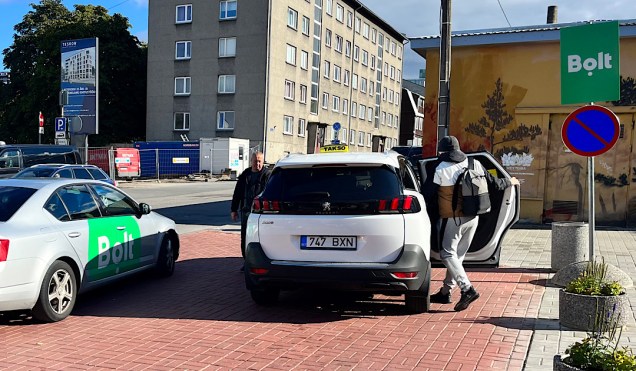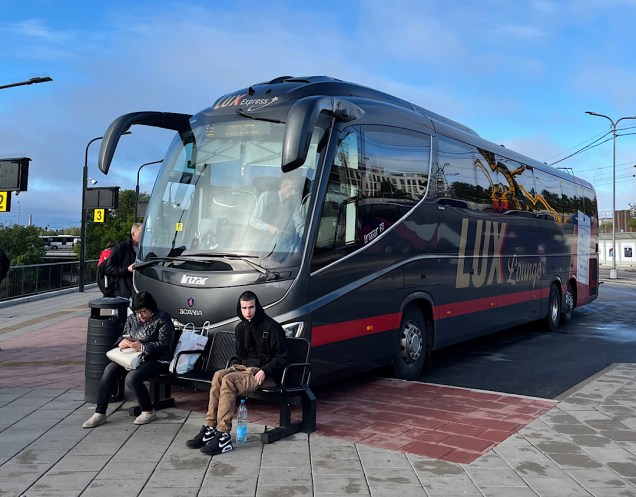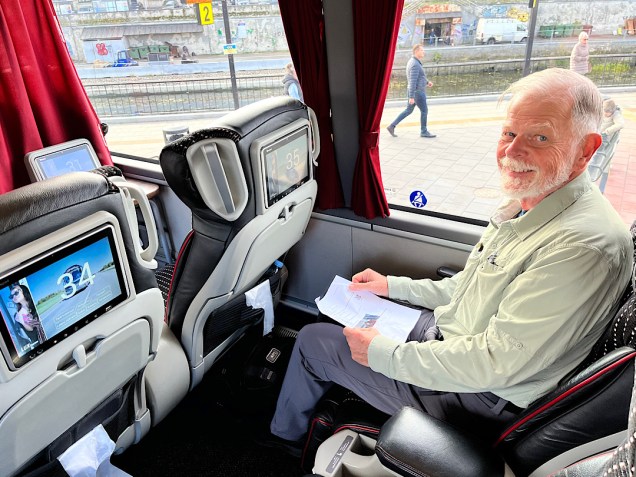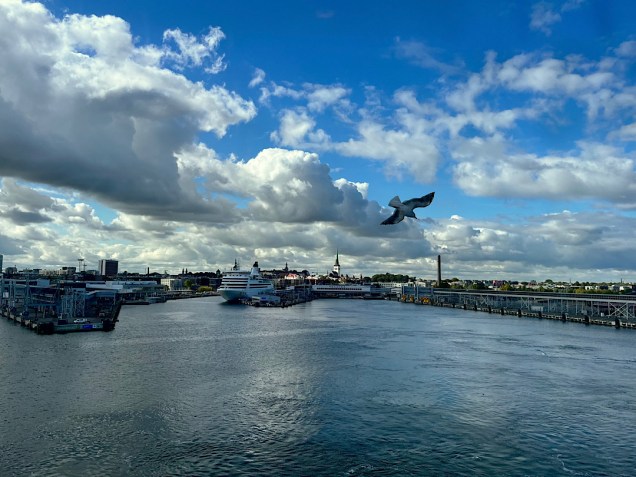 This part of the world may be flat but it’s a metaphorical Tower of Babel, so complex I never considered trying to learn any of the local tongues. The folks in Lithuania, Latvia, Estonia, and Finland each have a different language. We were told that Lithuanian and Latvian are sufficiently related that folks speaking each at least can guess what the other is saying. The same is true for Estonian and Finnish, which belong to the “Finno-Ugric” language family. Still, here’s how you say “Thank you” in each.
This part of the world may be flat but it’s a metaphorical Tower of Babel, so complex I never considered trying to learn any of the local tongues. The folks in Lithuania, Latvia, Estonia, and Finland each have a different language. We were told that Lithuanian and Latvian are sufficiently related that folks speaking each at least can guess what the other is saying. The same is true for Estonian and Finnish, which belong to the “Finno-Ugric” language family. Still, here’s how you say “Thank you” in each.
Lithuanian=Aciu (with lots of diacritical marks that WordPress can’t accommodate).
Latvian=Paldies
Estonian=Aitah
Finnish=Kiitos
Learning this, I moved Google Translate to the first page of my iPhone.
We’ve heard a lot of Russian in all four countries, and sometimes that’s the other language you see on public signs. Sometimes you see English, but not always. Despite all this, it’s been remarkably easy to get by because so many folks in the service sector (restaurants, museums, etc.) speak at least some English. And to my delight, getting around has been easier still.
In the cities we became enthusiastic patrons of Bolt, a ride-sharing service I had never heard of before we went to Vilnius. Created in 2013 by an Estonian high-school student who developed the first version of his app with 5,000 euros borrowed from his parents, Bolt today operates in more than 500 cities in at least 45 countries (according to Wikipedia) and has more than 100 million customers globally. I particularly loved how it showed up on Google Maps as an an alternative to walking, driving, or public transportation.
Bolt cars seemed far more available than Ubers. They rarely took more than 5 minutes to come, wherever we summoned one. And they typically cost about $5 or $6 a ride (including a big tip.)

To move between the countries, we used Lux Express buses, one of several alternatives. I bought those tickets online before we left San Diego.  These vehicles proved to be spotless and comfy, with amenities that included TV screens in the seat backs, a decent onboard toilet, and free hot coffee. The journeys from Vilnius to Riga and then from Riga to Tallinn each took less than 5 hours, gave us a look at the countryside, and cost only $26 a person for seats in the “premium” section of the bus. The rides were smooth enough for me to work on my blog posts.
These vehicles proved to be spotless and comfy, with amenities that included TV screens in the seat backs, a decent onboard toilet, and free hot coffee. The journeys from Vilnius to Riga and then from Riga to Tallinn each took less than 5 hours, gave us a look at the countryside, and cost only $26 a person for seats in the “premium” section of the bus. The rides were smooth enough for me to work on my blog posts.

It was even cheaper and faster to take the ferry from Tallinn to Helsinki — only $22 a person for the two and a quarter-hour transit across the Gulf of Finland. Our ship was the Finlandia.




Disembarking from the ferry, we were back in a country with American-style transportation prices. The Bolts and Ubers in downtown Helsinki seemed to be few and far from our ferry terminal, so we got into a regular taxi driven by an African who spoke good English. The ride to our apartment here took less than 20 minutes, but it cost $21. It made me feel nostalgic for those former Soviet republics.